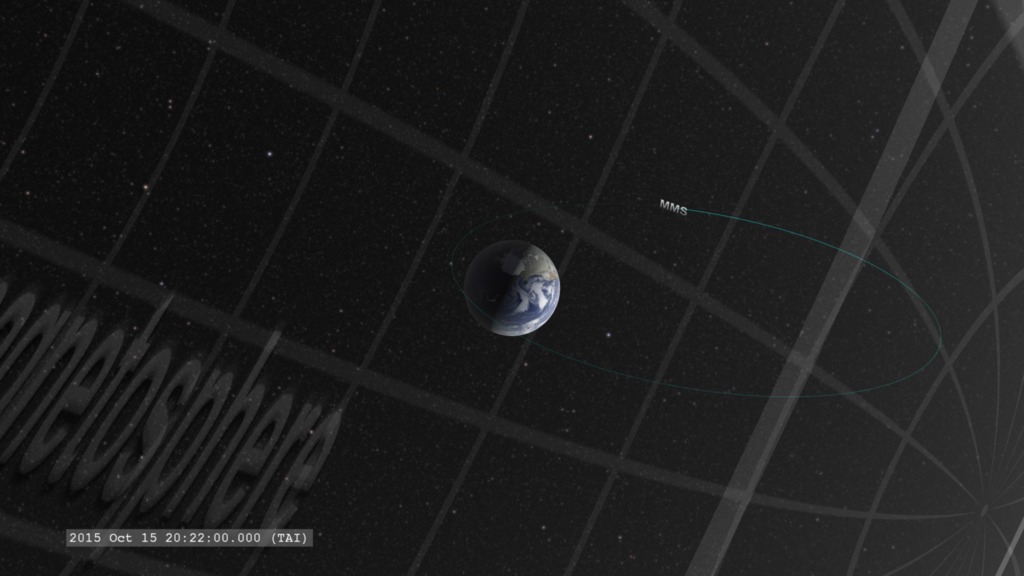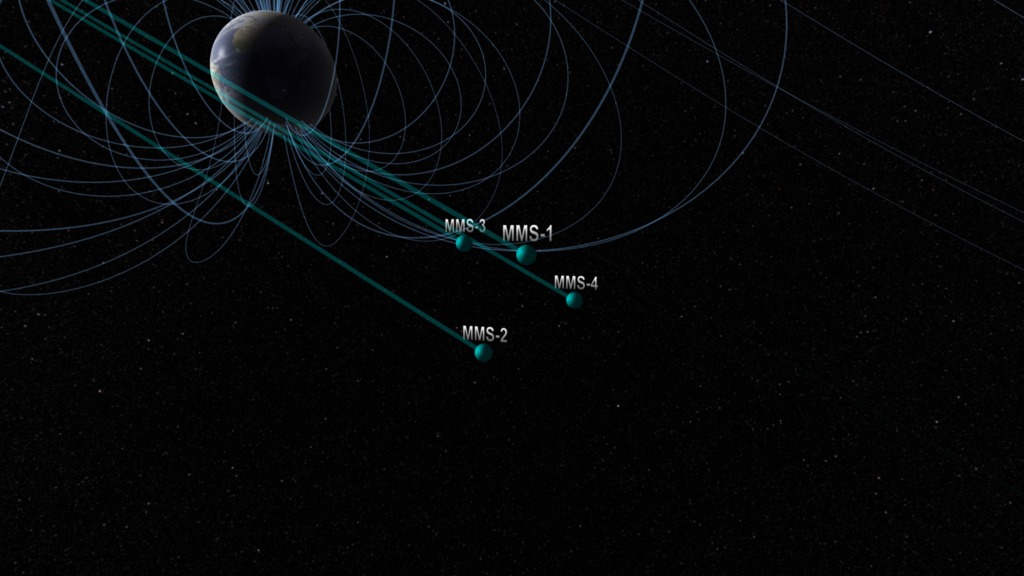MMS Phase 2b: Transitioning to Magnetosphere Science on the Darkside
Visualization of the spacecraft orbit transition from apogee at the dayside magnetopause to the nightside magnetopause.
Completing its study of magnetic reconnection at the boundary between Earth and the sun, the MMS spacecraft fleet transitions its orbit to studying magnetospheric events near the shadow of Earth.
Current scheduled maneuver times (subject to change) are:
- February 1, 2017: Resize perigee (the point on the orbit closest to Earth) to 60km
- February 9, 2017: First apogee (point on the orbit farthest from Earth) raising maneuver
- April 8, 2017: Final apogee raising maneuver
- April 16, 2017: Perigee resizing
- April 26, 2017: Reinitializing formation flying
The magnetosphere boundary represents a point of balance between the pressure of the solar wind passing Earth and the outward magnetic pressure of Earth's magnetic field. The location in this visualization is representative at may not accurately reflect the position relative to the spacecraft at any given future time.

MMS formation flying mode passing across the dayside magnetopause.

Apogee-raising maneuvers begin.

The individual spacecraft spread out along the orbit.

More apogee raising maneuvers.

Giving each other lots of room...

Finishing up apogee-raising boosts.

Moving back into formation flying.
For More Information
See NASA.gov
Credits
Please give credit for this item to:
NASA's Scientific Visualization Studio
-
Visualizer
- Tom Bridgman (Global Science and Technology, Inc.)
-
Writer
- Mara Johnson-Groh (Wyle Information Systems)
-
Producer
- Genna Duberstein (USRA)
-
Technical support
- Laurence Schuler (ADNET Systems, Inc.)
- Ian Jones (ADNET Systems, Inc.)
Missions
This page is related to the following missions:Datasets used
-
SPICE Ephemerides (SPICE Ephemerides)
ID: 755Satellite and planetary ephemerides
See all pages that use this dataset
Note: While we identify the data sets used on this page, we do not store any further details, nor the data sets themselves on our site.
Release date
This page was originally published on Thursday, February 9, 2017.
This page was last updated on Sunday, January 5, 2025 at 11:17 PM EST.

